Food is to the body as Travel is to the soul. And Blogging is the glues that binds them all
Phuentsholing: Bhutan Trip, Episode 2 | A Pork Lover's delight!
You don't have to be wise to understand the essence of good food in the lives of men and women. We are certainly not a species that live to eat, but some of us will feel that eating simply to live doesn’t suffice either. I have often seen that a good bite has the power to transform an ordinary journey into a legendary expedition! So the last time I was in Bhutan, reveling in nostalgia, I also took a culinary trip down memory lane.
TRAVEL
The Thinking Me
9/18/20245 min read

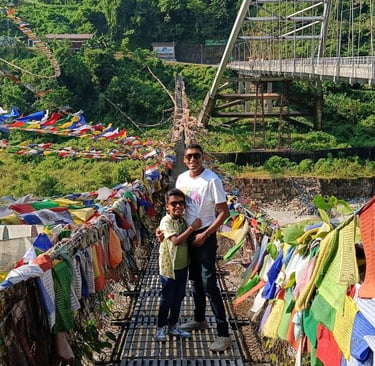
A wise man once said that good food makes everything worthwhile. Or did he?
You don't have to be wise to understand the essence of good food in the modest lives of men and women. We are certainly not a species that live to eat, but some of us will feel that eating simply to live doesn’t suffice either. We have accepted our tastebuds as our masters and relish the flavours, indulge in the aroma, a little longer than the sane masses.
I have tried to stop being a foodie as I have picked up the years, but the Foodie in me has refused to surrender. This little bugger often whispers in my ears when I’m passing by food stalls, gnaws in my tummy at odd hours, and conspires with my nostrils to break my resolve. He is unwilling to give up without a fight.
I have often seen that a good bite has the power to transform an ordinary journey into a legendary expedition! So the last time I was in Bhutan, reveling in nostalgia, I also took a culinary trip down memory lane.
The first part of our day in Bhutan was covered in a recent blog (Phuentsholing: Bhutan Trip Episode 1). Following our exploits at the Zangto Pelli Monastery, we opted to hire a cab and visit one of Bhutan’s biggest bridges, which is only 8 km from Phuentsholing.
Amo Chhu Bridge, Phuentsholing
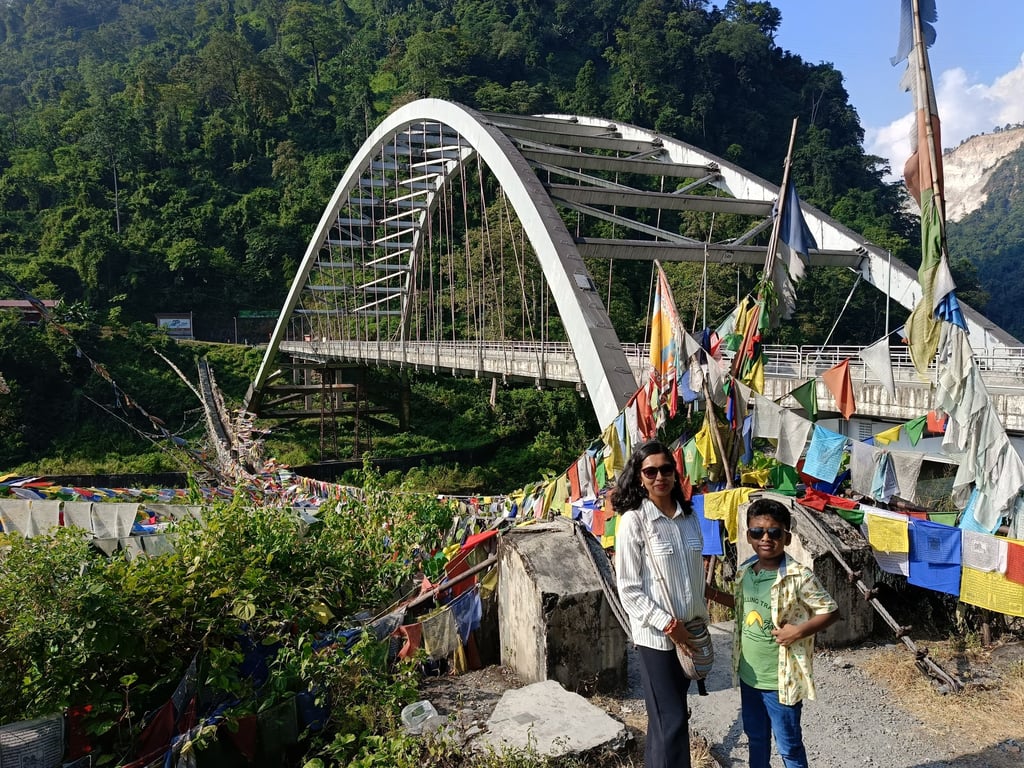

The Amo Chhu Bridge is situated at Tabaramtey and connects Phuentsholing with Samtse. The fabled river Torsa, which is one of the lifelines of North Bengal, is known as Amo Chhu in Bhutan. It arrives in the Land of the Thunder Dragon from Tibet and travels 145 km before entering India through the border town of Jaigaon, and, subsequently, is christened 'Torsa'.
The road to the bridge was under construction at parts but is likely to be completed by the time I write this blog. Once we left the hustle and bustle of the town behind, we were greeted by the rugged beauty of rural Bhutan.
The Amo Chhu Bridge is quite beautiful, but the attraction principale is the old hanging bridge just by its side. Still maintained quite well, a walk on this structure across the raging Amo Chhu river is not for the faint-hearted. The bridge swayed gently as we walked across and I will admit that there was a collective sigh of relief as we reached the other end. Unfortunately, foreigners cannot travel beyond this bridge without proper documents, so we headed back to Phuetsholing once we had taken our fill of the scenic beauty around.
Phaksha Pa at Restaurant Zen, Phuentsholing
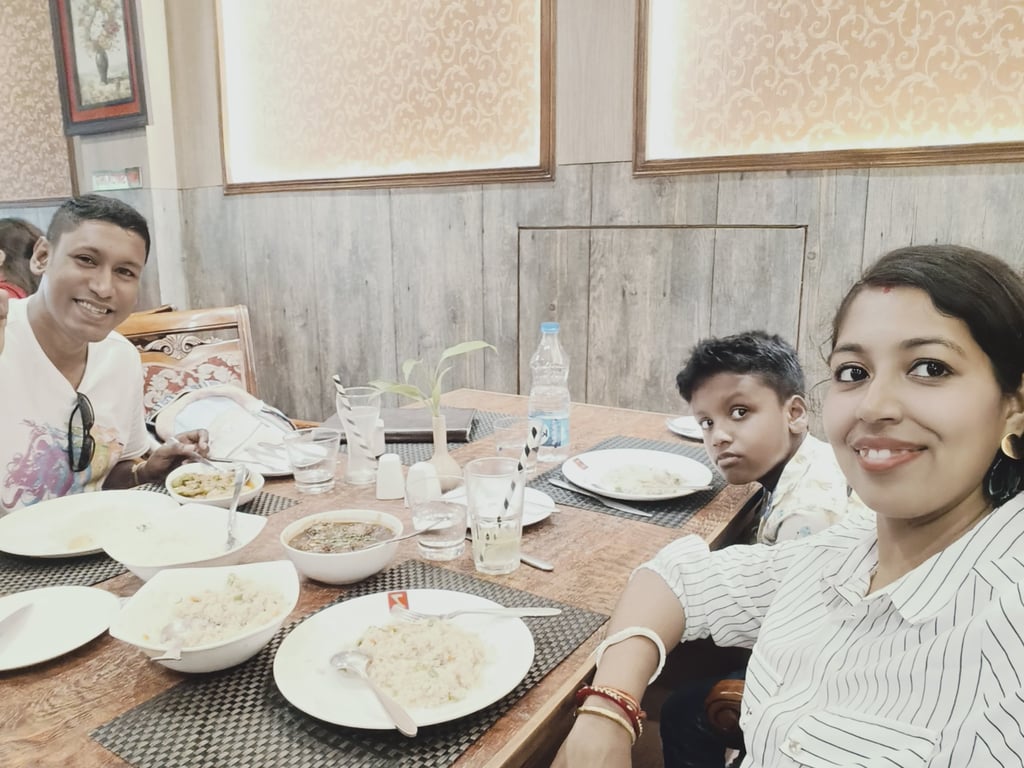

All that traveling put a dent in our belly, so we headed back to Town for lunch. There was a time when I used to frequent many of the restaurants at Phuentsholing, but that was an entirely different era. However, with greying hair and missing teeth now an integral part of my identify, I struggled to locate the places I had dined in years ago.
Perhaps, if I had written a blog about it I would have remembered those moments better!
But there are some things that you don’t need to document to remember. Instead, your grey cells trigger those memories just at the right time. For instance, the smell of a freshly stewed cauldron of your favorite meal. The first bite exploding little flavour bombs inside your mouth. The favours slipping into your soul.
Is it too much or are there others who relish their favorite meal like me?
So we arrived at Zen Restaurant and took our seats. The polite waiter noted our orders carefully. We ordered Fried Rice, Veg Manchurian, Rice and Phaksha Pa, which is a Bhutanese delicacy and - as described in the previous blog post - one of my favorite dishes in the world.
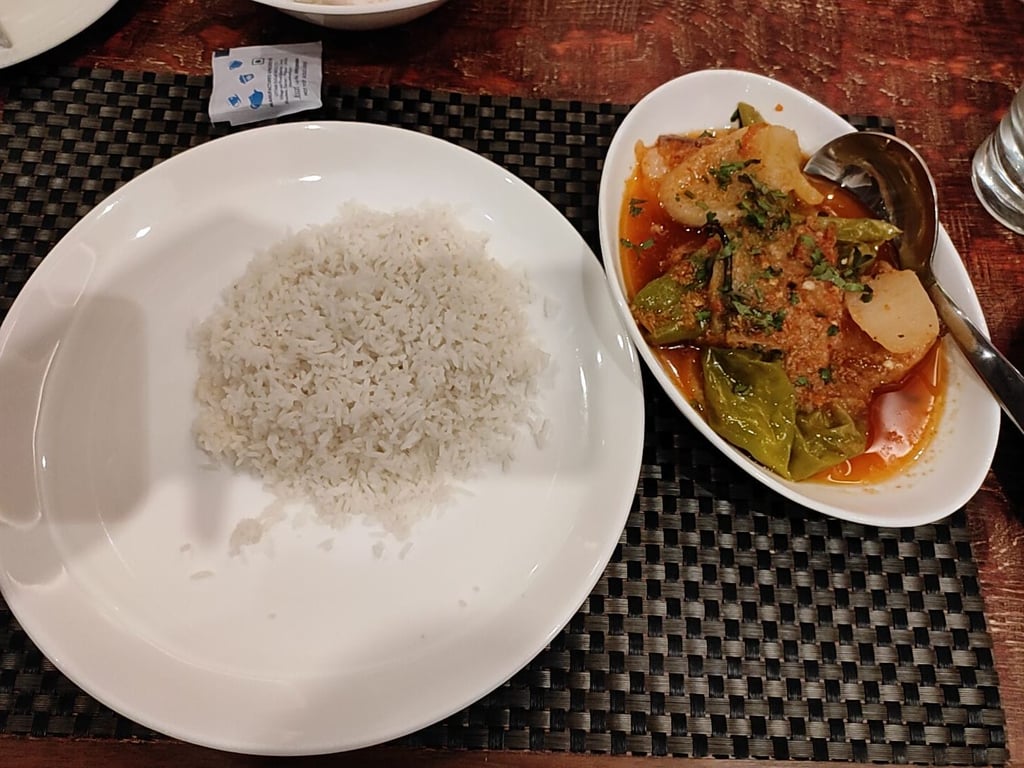

It is prepared by slow cooking specially cut pieces of pork belly with various vegetables, most notably radish, to give it an out-of-the-world flavour. We sipped on some Fresh Lime Water as we awaited our order. I, of course, was a bundle of nerves and struggled to contain my excitement.
I was about to taste my favorite dish for the first time in a decade.
It turned out to be exactly as I expected, a palate of nostalgia, overwhelming me with every bite. All Pork lovers of the world must taste this little piece of culinary heaven. And for the rest (including my wife), you have no idea what you are missing out on!
I had picked up some rudimentary Dzongkha, the language of Bhutan, during my two-year stay with Coca Cola Bhutan. I remember very little of it, but if I could, I would have said 'Zhimbay!' (It's delicious!)
Palden Tashi Chholing Shedra
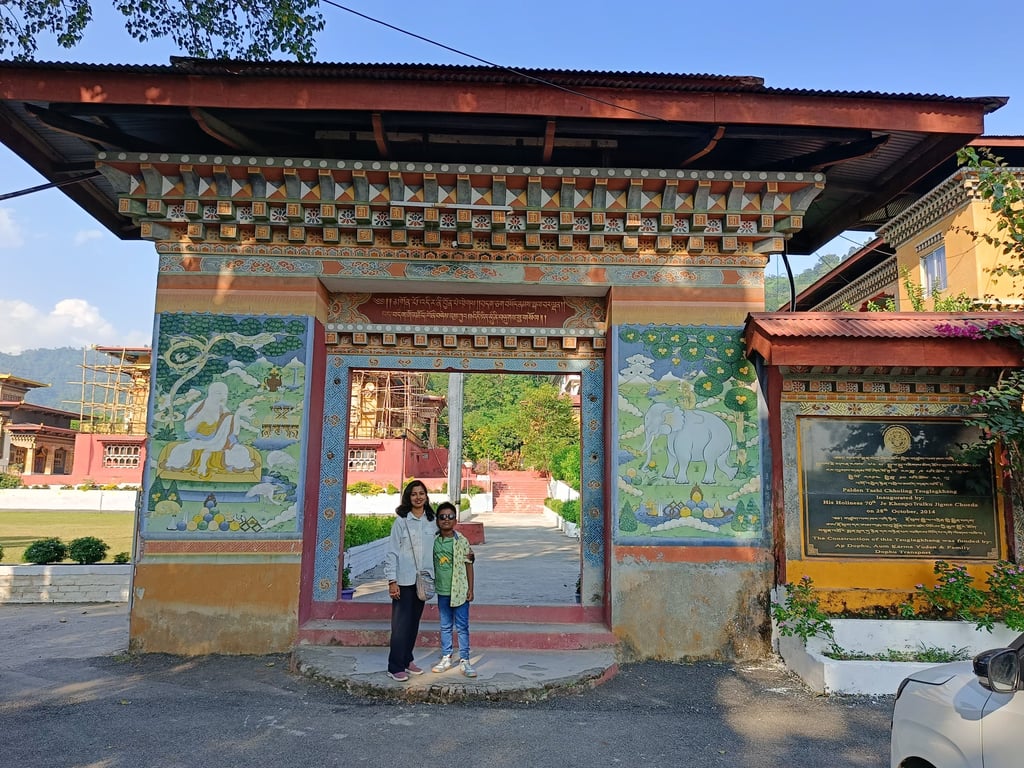

With bellies full and minds satisfied, we decided to make one more stop before ending our trip to Bhutan. We headed to Palden Tashi Chholing Shedra, a Center for learning Buddhism and its practices.
The place is to the west of the town and has an aura of calm and peace about it. Once you step inside, it is important to be mindful of the cultural practices associated with the institution.
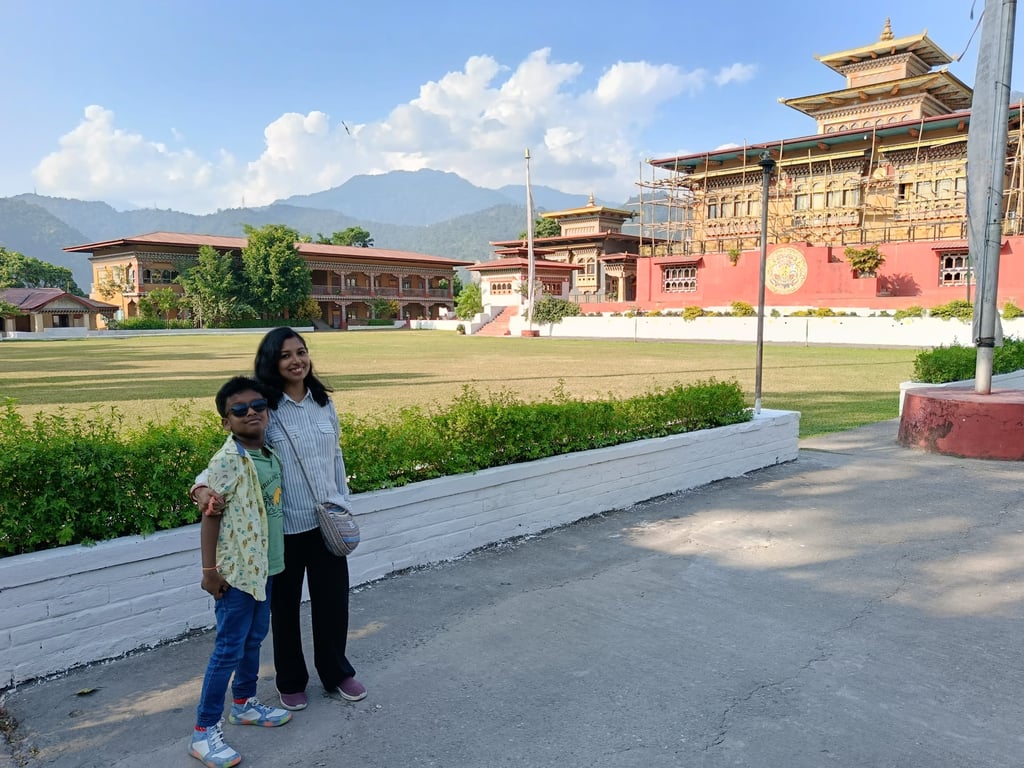

It is not a place where you should create a ruckus, instead, this is where you can seek peace and quiet. We walked around the area, which was neatly kept and well-maintained. Since a few of the halls were under construction we couldn't enter inside. Special permission might be required to enter the halls and photography could be prohibited at places.
We walked around, enjoying the warm embrace of the October sun, spending the afternoon in leisure. We headed back to town to indulge in a little shopping, picking up a few memoirs for the road before heading back.
Log Jaygay, Bhutan
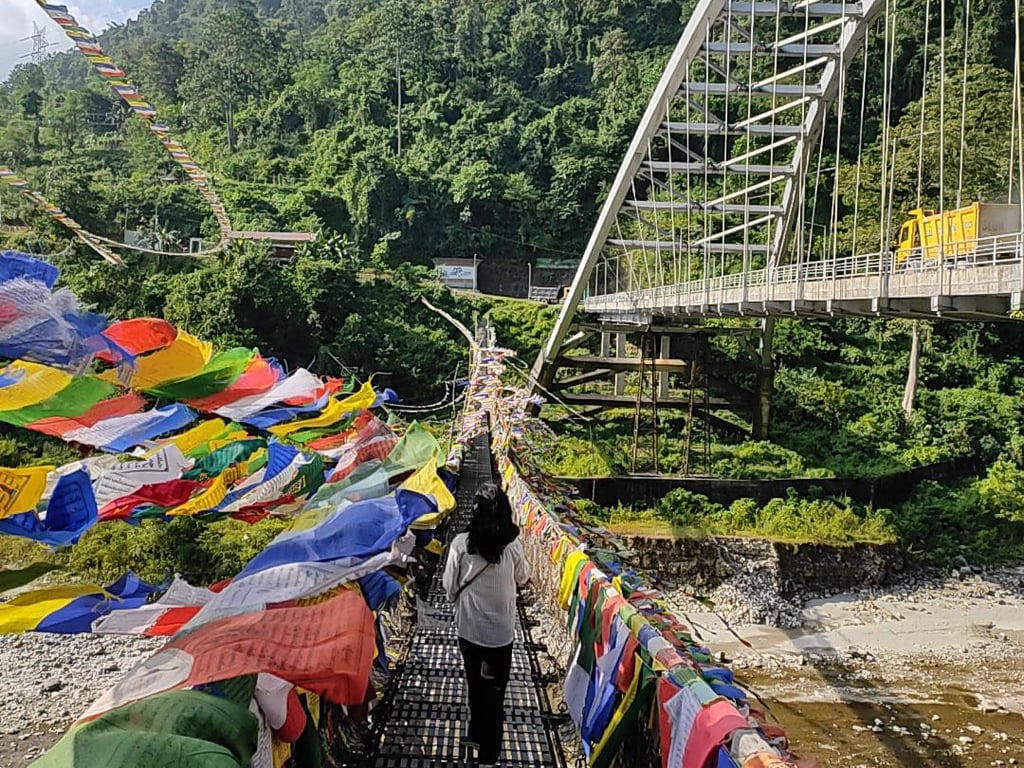

A day is too little time to explore the Land of the Thunder Dragon, or Druk Yul as they say in Dzongkha. And so a day in Phuentsholing left us craving for more. Bhutan is a beautiful place, with warm, welcoming people. If you are here, try to be accepting of their customs and culture, and respect their way. Speak to them, because almost everyone can speak Hindi.
But you could also surprise your hosts by uttering a few words in Dzongkha. When you meet people, say Kuzu Zangpo, or simply Kuzu (Hello!)
This is also a place where my late Father spent some considerable time in his life. I do plan to be back again some day to explore this country further, and maybe retrace his footsteps.
Log Jaygay (Till we meet again.)
